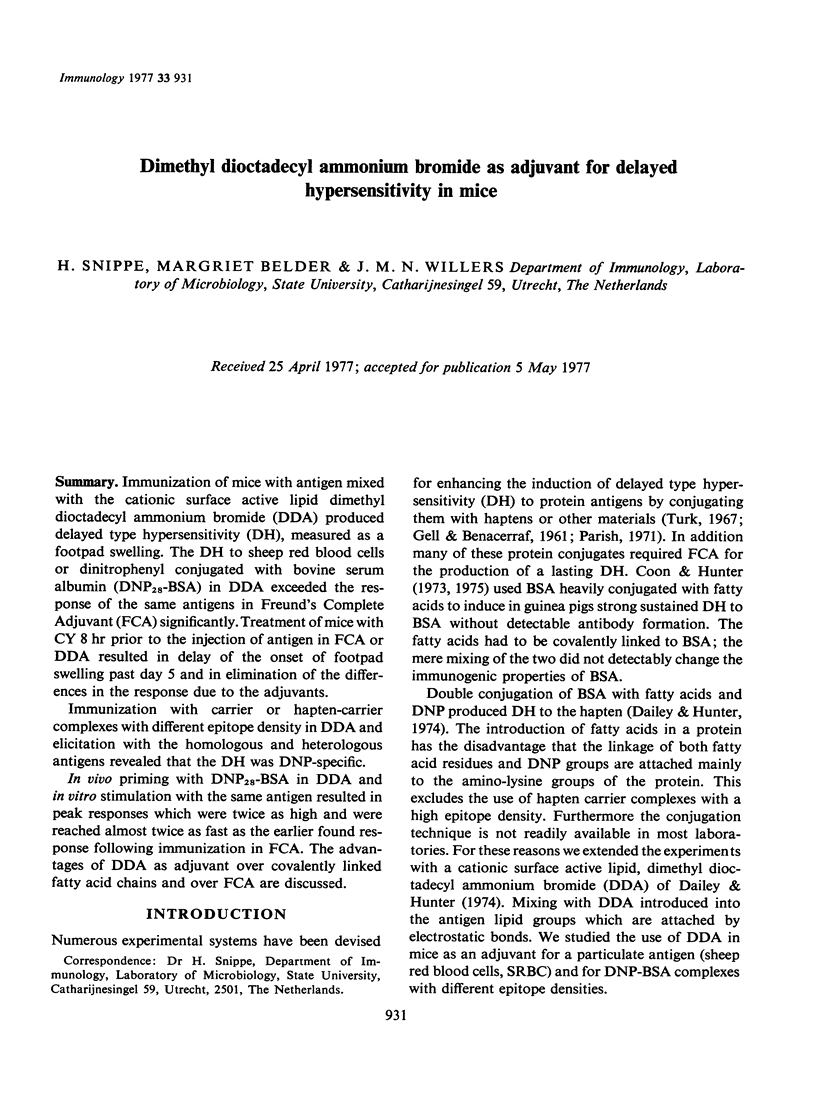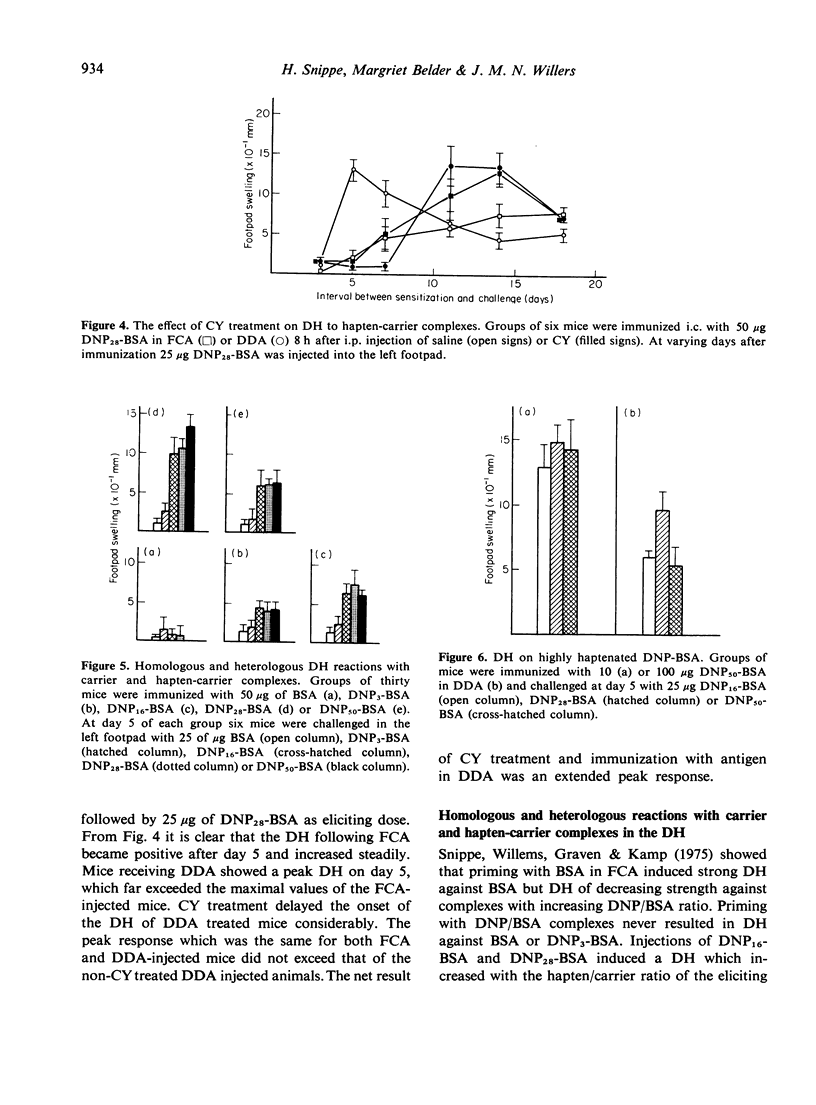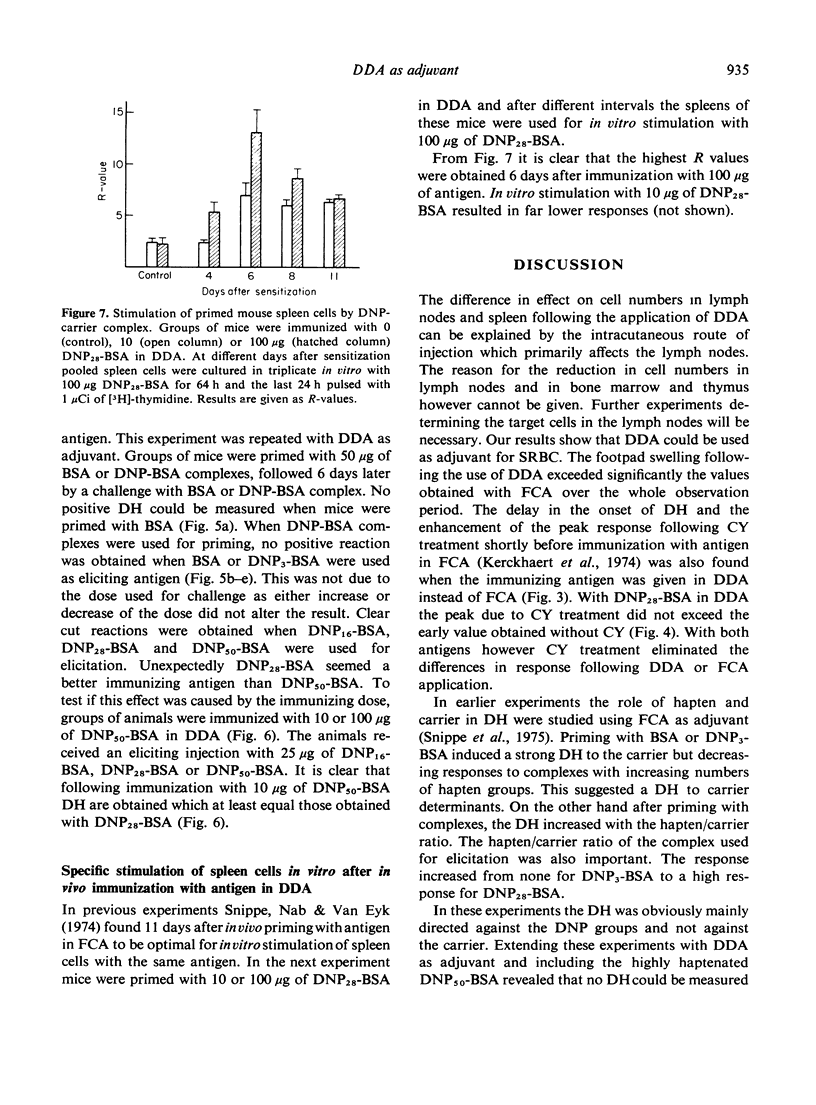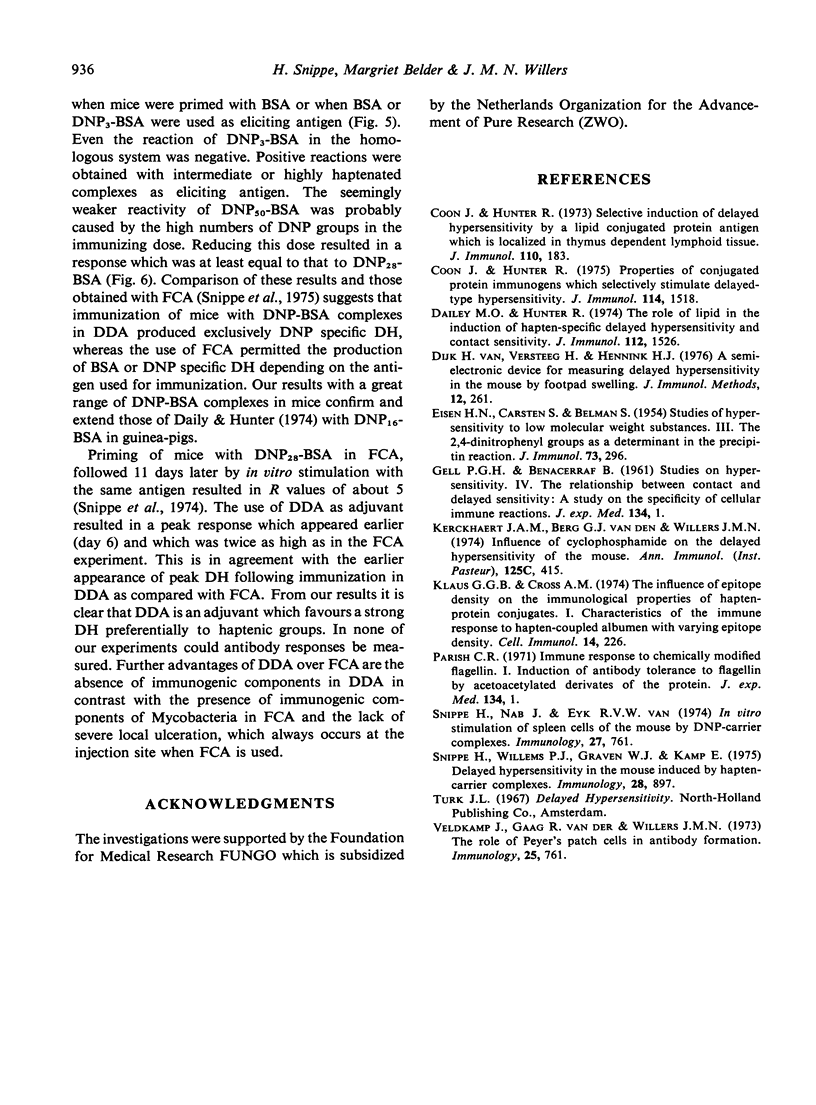Abstract
Immunization of mice with antigen mixed with cationic surface active lipid dimethyl dioctadecyl ammonium bromide (DDA) produced delayed type hypersensitivity (DH), measured as a footpad swelling. The DH to sheep red blood cells or dinitrophenyl conjugated with bovine serum albumin (DNP28-BSA) in DDA exceeded the response of the same antigens in Freund's Complete Adjuvant (FCA) significantly. Treatment of mice with CY 8 hr prior to the injection of antigen in FCA or DDA resulted in delay of the onset of footpad swelling past day 5 and in elimination of the differences in the response due to the adjuvants. Immunization with carrier or hapten-carrier complexes with different epitope density in DDA and elicitation with the homologous and heterologous antigens revealed that the DH was DNP-specific. In vivo priming with DNP28-BSA in DDA and in vitro stimulation with the same antigen resulted in peak responses which were twice as high and were reached almost twice as fast as the earlier found response following immunization in FCA. The advantages of DDA as adjuvant over covalently linked fatty acid chains and over FCA are discussed.
Full text
PDF





Selected References
These references are in PubMed. This may not be the complete list of references from this article.
- Coon J., Hunter R. Properties of conjugated protein immunogens which selectively stimulate delayed-type hypersensitivity. J Immunol. 1975 May;114(5):1518–1522. [PubMed] [Google Scholar]
- Coon J., Hunter R. Selective induction of delayed hypersensitivity by a lipid conjugated protein antigen which is localized in thymus dependent lymphoid tissue. J Immunol. 1973 Jan;110(1):183–190. [PubMed] [Google Scholar]
- Dailey M. O., Hunter R. L. The role of lipid in the induction of hapten-specific delayed hypersensitivity and contact sensitivity. J Immunol. 1974 Apr;112(4):1526–1534. [PubMed] [Google Scholar]
- Kerckhaert J. A., Van den Berg G. J., Willers J. M. Influence of cyclophosphamide on the delayed hypersensitivity of the mouse. Ann Immunol (Paris) 1974 Mar-Apr;125(3):415–426. [PubMed] [Google Scholar]
- Klaus G. G., Cross A. M. The influence of epitope density on the immunological properties of hapten-protein conjugates. I. Characteristics of the immune response to hapten-coupled albumen with varying epitope density. Cell Immunol. 1974 Nov;14(2):226–241. doi: 10.1016/0008-8749(74)90208-1. [DOI] [PubMed] [Google Scholar]
- Parish C. R. Immune response to chemically modified flagellin. I. Induction of antibody tolerance to flagellin by acetoacetylated derivatives of the protein. J Exp Med. 1971 Jul 1;134(1):1–20. doi: 10.1084/jem.134.1.1. [DOI] [PMC free article] [PubMed] [Google Scholar]
- Snippe H., Nab J., van Eyk R. V. In vitro stimulation of spleen cells of the mouse by DNP--carrier complexes. Immunology. 1974 Nov;27(5):761–770. [PMC free article] [PubMed] [Google Scholar]
- Snippe H., Willems P. J., Graven W. G., Kamp E. Delayed hypersensitivity in the mouse induced by hapten-carrier complexes. Immunology. 1975 May;28(5):897–907. [PMC free article] [PubMed] [Google Scholar]
- Van Dijk H., Versteeg H., Hennink H. J. A semi-electronic device for measuring delayed hypersensitivity in the mouse by footpad swelling. J Immunol Methods. 1976;12(3-4):261–265. doi: 10.1016/0022-1759(76)90047-8. [DOI] [PubMed] [Google Scholar]
- Veldkamp J., van der Gaag R., Willers J. M. The role of Peyer's patch cells in antibody formation. Immunology. 1973 Nov;25(5):761–771. [PMC free article] [PubMed] [Google Scholar]


